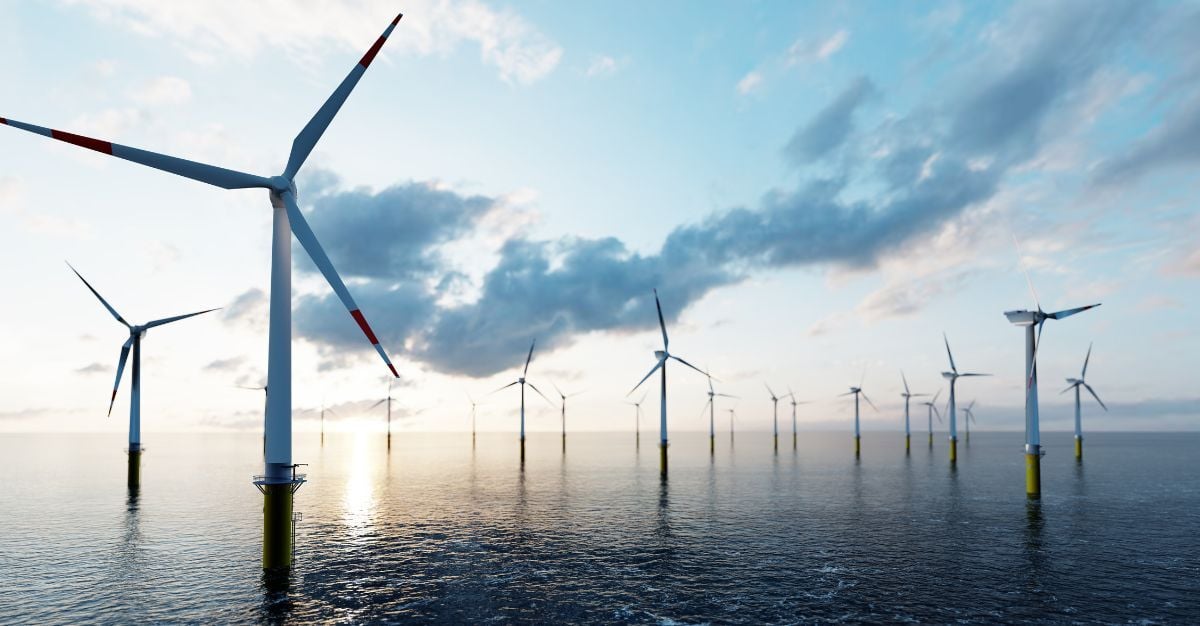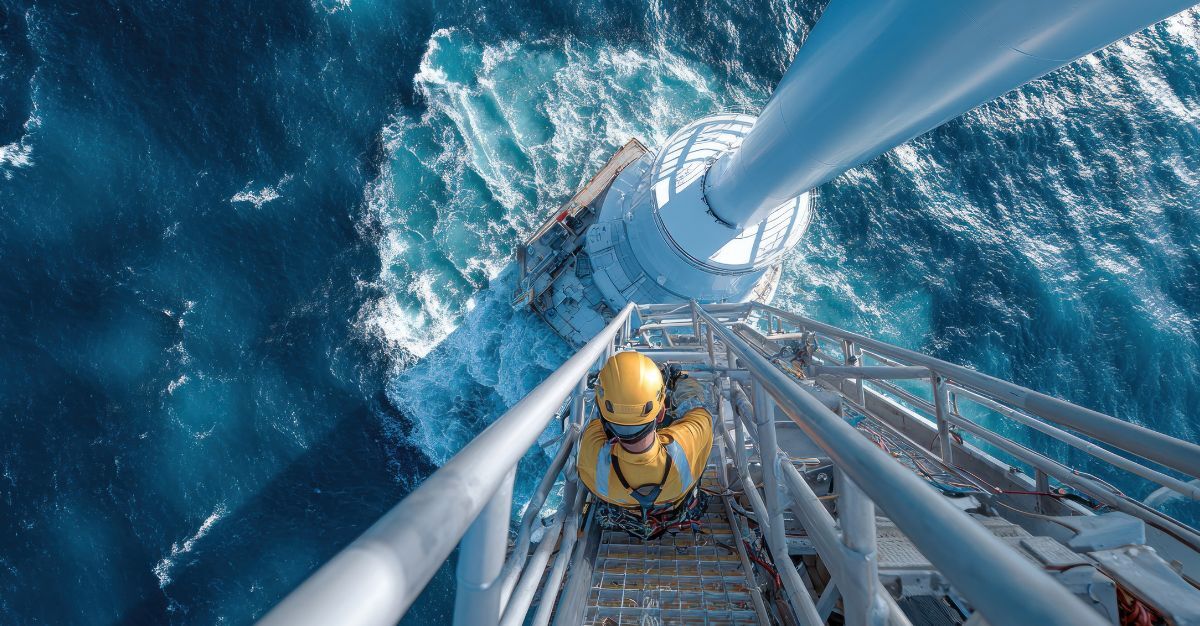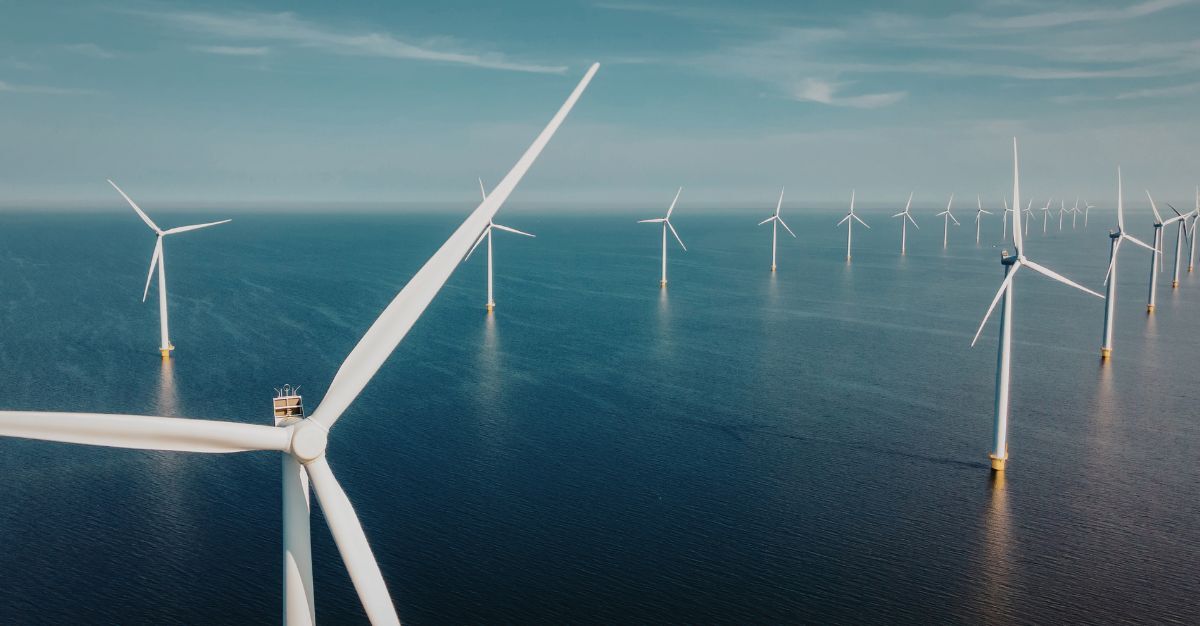What is a Safe System of Work (SSoW)?
A Guide for Offshore Wind Professionals
A Safe System of Work (SSoW) is a structured approach to identifying risks and implementing procedures that protect workers and assets. For project managers, HSE teams, and marine coordinators, understanding SSoW principles like HSG250, Permit to Work (PTW), and Wind Turbine Safety Rules (WTSR) is essential to managing hazards, authorising work, and ensuring the right PPE is used every time. In this article, we’ll explore the key components of an SSoW like SeaPlanner’s and how it supports safe offshore wind operations.
Contents
- What is a Safe System of Work?
- Key Components of a Safe System of Work
- Why is SSoW Critical in Offshore Wind?
- Digitalising the Safe System of Work
- What to Look for in SSoW Software
- How SeaPlanner Supports a Safe System of Work
- Summary
- SSoW FAQs
What is a Safe System of Work?
The concept of SSoW is rooted in UK health and safety legislation, particularly HSG250, which is a guidance document published by the Health and Safety Executive (HSE). HSG250 outlines how to develop and apply safe systems of work, especially in high-risk industries like offshore wind.
At its core, an SSoW aims to eliminate or control risks to health and safety through structured planning, clear communication, and documented procedures. While compliance is the ultimate intention, it’s also about creating a culture where safety is embedded in every task, from routine maintenance to complex marine operations.
Key Components of a Safe System of Work
A solid SSoW relies on several key elements that work together to manage risk and ensure safe execution of tasks in offshore wind environments:
Risk Assessment
This is the foundation of any SSoW. It involves identifying potential hazards, evaluating the likelihood and severity of harm, and determining appropriate control measures to reduce risk to an acceptable level.
Method Statements
Once risks are assessed, a method statement outlines how the work will be carried out safely. It includes step-by-step instructions, required equipment, personnel responsibilities, and safety precautions.
Permit to Work (PTW)
A PTW system formalises the control of high-risk activities, such as working at height or in confined spaces. It’s especially critical during SIMOPs (Simultaneous Operations), where multiple teams are working in close proximity and coordination is essential to avoid conflict and ensure safety.
Monitoring and Supervision
Active supervision ensures that work is carried out as planned and that safety measures are followed. This includes the custody and transfer of control: a process that ensures responsibility for a worksite is clearly handed over between companies and packages, maintaining accountability and continuity.
Emergency Procedures
Every SSoW must include clear emergency protocols that cover evacuation routes, communication plans, and rescue arrangements. Offshore environments demand fast, coordinated responses to incidents, making this component vital.
Why is SSoW Critical in Offshore Wind?
Offshore wind projects operate in some of the most challenging environments in the energy sector. Harsh weather, remote locations, and dynamic marine conditions introduce unique hazards, from vessel transfers and working at height to electrical work within confined spaces.
Preventing incidents is the core purpose of an SSoW. For example: on 5th November 2005, two subcontractors died from nitrogen asphyxiation while working on a hydro-cracking unit. One technician fell into a nitrogen-inerted reactor while retrieving tape, and the second was fatally overcome while trying to rescue him.
A rigorous SSoW including proper risk assessment, atmospheric testing, Permit to Work, and clear emergency procedures could have identified the oxygen-deficient hazard, restricted access, and ensured safe rescue protocols. This incident underscores why SSoW isn’t just a formality. It’s critical in safeguarding against preventable loss of life.
Coordinating personnel, vessels, and equipment across multiple locations and shifts makes managing safe work conditions in offshore environments even more complex. Without a structured approach like SSoW, the risk of miscommunication, procedural gaps, or conflicting operations increases significantly.
Regulatory compliance is also non-negotiable. Standards such as the Wind Turbine Safety Rules (WTSR), HSE guidance (e.g., HSG250), and ISO 45001 require clear documentation, risk control, and accountability, all of which are core features of any SSoW.
Digitalising the Safe System of Work
Paper-based SSoW systems can be slow, inconsistent, and difficult to manage, especially offshore, where teams are spread across vessels, platforms, and remote sites. Manual processes often lead to delays, lost documentation, and limited visibility of ongoing operations.
Digital SSoW platforms (often referred to iSSoW) solve these challenges by offering:
- Easy identification of SIMOPs, helping to prevent conflicting operations
- Real-time visibility of personnel, permits, and work status
- Automated workflows that streamline approvals and reduce human error
- Audit trails and reporting for compliance and incident investigation
- System-guided safety checks and hazard identification, ensuring nothing is missed
- Integration with marine coordination tools like SeaPlanner Marine Management System, enabling seamless control over vessel movements, personnel tracking, and work authorisation.
What to Look for in SSoW Software
Choosing the right Safe System of Work software is essential for offshore wind teams looking to improve safety, efficiency, and compliance. The best platforms go beyond digitising paperwork; they actively support safer operations.
Look for tools that offer:
- Customisable permit workflows to match your project's specific requirements
- Role-based access and approvals to ensure accountability and control
- Integration with the Marine Management System (MMS) for full operational and situational awareness
- Compliance with industry standards like WTSR, HSE guidance, and ISO 45001
- User-friendly interfaces that field teams can use confidently in challenging environments
- A central dashboard for real-time visibility of permits, personnel, and work status
- Integration with digital RAMS to guarantee access to the most up-to-date version during operations
These features help ensure your SSoW system is not only compliant but practical, scalable, and built for offshore realities.
How SeaPlanner Supports a Safe System of Work
SeaPlanner is purpose-built for offshore projects, offering a fully integrated SSoW that enhances safety, compliance, and operational efficiency across all phases of development.
Its configurable permit system, designed with input from experienced HSE professionals, ensures consistent review and approval workflows. This helps keep projects safe and on schedule by streamlining submissions, reducing delays, and ensuring all work is authorised before personnel arrive on site.
Key features include:
- Digital Permits with automated workflows and integration with marine coordination for real-time visibility of permitted works, resources, and personnel
- RAMS module that supports early submission and version control, ensuring permits are only issued against approved documentation
- Transfer of Control (TOC) functionality to manage asset custody and restrict access, maintaining site safety and accountability
- Central dashboard for live oversight of operations and safety status
- System-guided safety checks and hazard identification to reduce human error and improve consistency
- Flexible configuration tailored to each client’s operational needs, ensuring the system aligns with specific project requirements and workflows
By integrating SSoW with workforce and vessel tracking, SeaPlanner provides a single source of truth for offshore teams, supporting safer, smarter project delivery.
Summary: Safe System of Work is Essential for Offshore Wind
A SSoW is essential for managing risk, protecting personnel, and ensuring regulatory compliance in offshore wind projects. If you're still relying on paper-based systems or fragmented workflows, now is the time to evaluate your approach. Digital platforms like SeaPlanner offer a smarter, more scalable way to manage safety offshore. Request a demo today to see how we can support your team in delivering safer, more successful projects.
SSoW FAQs
A Safe System of Work (SSoW) is a structured process that identifies hazards, assesses risks, and implements controls to ensure tasks are carried out safely. In offshore wind, where conditions are complex and high-risk, an SSoW is essential for protecting personnel, maintaining compliance, and preventing incidents.
Digital SSoW platforms streamline permit workflows, automate safety checks, and provide real-time visibility of operations. They reduce paperwork, minimise delays, and help teams identify SIMOPs and hazards early, making offshore operations safer and more coordinated.
SeaPlanner is purpose-built for offshore wind projects. It integrates digital permits, RAMS, and Transfer of Control with marine coordination tools, offering a single platform for managing safety, personnel, and vessel activity. It’s also highly flexible; configurable to match each client’s specific workflows and safety requirements.


